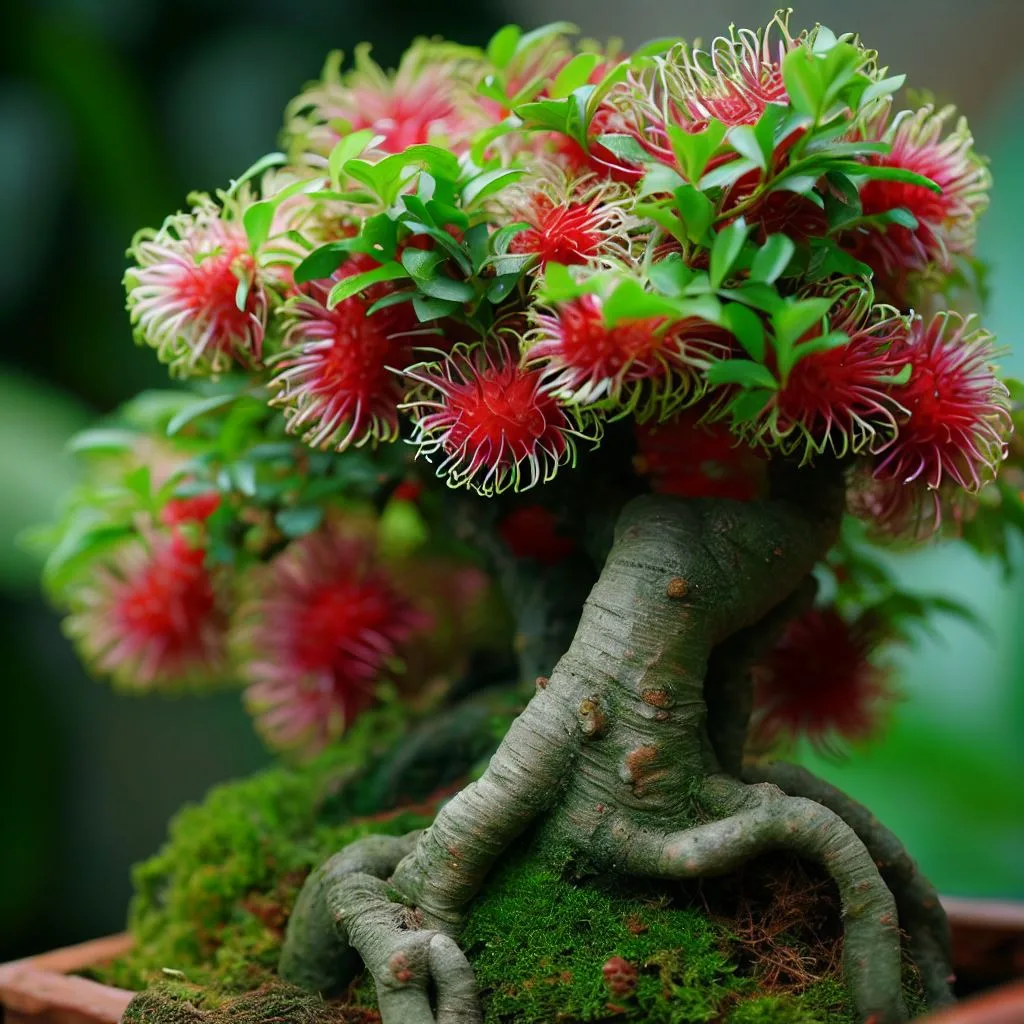
As an avid bonsai enthusiast, I have always been captivated by the beauty and elegance of these miniature trees. One particular bonsai variety that has caught my attention is the rambutan bonsai. The rambutan tree, native to Southeast Asia, produces exquisite fruits that resemble hairy lychees. In this step-by-step guide, I will take you through the process of creating and caring for your very own rambutan bonsai.
Understanding the Rambutan Tree
Before delving into the world of it, it is essential to understand the nature of the rambutan tree. The rambutan tree, scientifically known as Nephelium lappaceum, is a tropical fruit tree that belongs to the Sapindaceae family. It is a medium-sized evergreen tree with a dense canopy of glossy, dark green leaves. The tree produces clusters of vibrant red fruits with spiky hairs, giving it a unique appearance.
Selecting the Right Rambutan Variety for Bonsai
When it comes to selecting the right rambutan variety for bonsai, it is crucial to consider certain factors. Firstly, choose a variety that is suitable for bonsai cultivation, such as the ‘R-134’ or ‘R-156’ varieties, which have compact growth habits. Secondly, consider the climate in which you reside. Rambutan trees thrive in tropical and subtropical regions, so ensure that the variety you choose is suitable for your climate.
Tools and Materials Needed for Rambutan Bonsai
To embark on your rambutan bonsai journey, you will need a set of essential tools and materials. These include a bonsai pruning shears, concave cutters, wire cutters, branch benders, root rake, bonsai soil, organic fertilizer, and a bonsai pot. It is crucial to invest in high-quality tools to ensure precision and minimize damage to the tree.
Step-by-Step Guide to Creating a Rambutan Bonsai
Creating it requires patience, skill, and attention to detail. Here is a step-by-step guide to help you get started:
- Selecting the Right Rambutan Seedling: Choose a healthy seedling with a straight trunk and well-developed branches.
- Pruning and Shaping: Begin by trimming away any unwanted branches and shaping the tree into the desired form using bonsai pruning shears and concave cutters.
- Wiring and Training: Gently wire the branches to guide them into the desired position. Avoid excessive wiring to prevent damage to the tree.
- Repotting: Repot it every 2-3 years, using a well-draining bonsai soil mix.
- Watering and Fertilizing: Ensure that the bonsai receives adequate water, but avoid overwatering. Fertilize the tree regularly with organic bonsai fertilizer to promote healthy growth.
Pruning and Shaping Techniques for RambutanBonsai
Pruning and shaping are essential aspects of rambutan bonsai cultivation. Regular pruning helps maintain the desired shape and size of the bonsai, while shaping allows you to create unique and artistic designs. When pruning, always remove dead or diseased branches first, followed by thinning out dense foliage to improve airflow and light penetration. To shape the tree, use branch benders to gently bend branches into the desired position. Remember to be patient and allow the tree to recover between shaping sessions.
Caring for Your RambutanBonsai – Watering, Fertilizing, and Repotting
Proper care is crucial for the health and vitality of your rambutan bonsai. Water the tree regularly, ensuring that the soil remains evenly moist but not waterlogged. Avoid allowing the soil to completely dry out, as this can lead to stress and root damage. Fertilize the bonsai every 4-6 weeks during the growing season with a balanced organic fertilizer. Repot the tree every 2-3 years to prevent root bound and promote healthy growth.
Common Pests and Diseases of Rambutan Bonsai and How to Deal with Them
Like any other plant, it is susceptible to pests and diseases. Common pests include aphids, mealybugs, scale insects, and spider mites. To deal with these pests, you can gently wash the tree with a mild soap solution or use organic insecticides. Keep an eye out for signs of diseases such as fungal infections or root rot. If you notice any symptoms, promptly treat the tree with appropriate fungicides and adjust the watering regimen to prevent further damage.
Displaying and Showcasing Your Rambutan Bonsai
Once you have mastered the art of rambutan bonsai cultivation, it’s time to display and showcase your masterpiece. Choose a suitable bonsai pot that complements the tree’s aesthetic qualities. Consider the size, shape, and color of the pot to create a harmonious balance. Place your rambutan bonsai in a well-lit area, away from direct sunlight and drafts. Rotate the tree periodically to ensure even growth and prevent lopsidedness.
Conclusion and Final Tips for Mastering RambutanBonsai
In conclusion, mastering the art of rambutan bonsai requires dedication, patience, and a deep understanding of the tree’s needs. By following this step-by-step guide and implementing proper care techniques, you can create a stunning rambutan bonsai that will bring joy and beauty to your life. Remember to always observe your bonsai closely and make adjustments as needed. With time and practice, you will develop the skills and expertise to become a true master of rambutan bonsai cultivation.
Now, it’s time to embark on your rambutan bonsai journey and experience the wonders of this unique art form. Happy bonsai cultivation!
CTA: Share your rambutan bonsai journey with us in the comments below!






